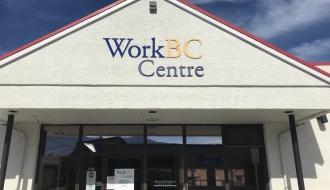Definitions
RetirementPermanently leaving a job or career at, or near, the usual age for doing so (e.g., 65) or by choice. |
RevenueIncome, particularly for a company. |
SalaryA fixed regular payment for work made once or twice a month by an employer to an employee. See Wages. |
Seasonal employmentThe hiring of workers to meet labour demands during a particular season or time of year. For example, retailers are often busiest at Christmas, landscaping companies and nurseries are usually busiest in the spring and summer months, and farmers must harvest their crops in the summer and autumn months. See, also, Temporary workers. |
Secondary educationHigh school or school attended after elementary school, generally following grade 7, 8 or 9 (depending on the province or territory). |
Secondary industriesIndustries that typically support primary industries. Examples of secondary industries: manufacturing (both resource and non-resource-based); construction; utilities that distribute electricity, oil and gas, or water. |
SectorA grouping of industries that produces related goods or services. For example, the logging industry produces logs, which are sawed into lumber by the wood industry or chipped and turned into pulp or paper by the paper industry. Because these three industries are related, they are typically grouped into what is called the forest sector. |
Self-employmentWorking for oneself rather than being employed by a company or other organization. Many self-employed people work on their own or with unpaid help from family members. Others have paid employees. Examples of self-employed people: those who run corner stores or other small businesses, farmers, accountants, housekeepers, gardeners, dentists. |
Service sectorThe sector of the economy made up of industries that provide services rather than goods ranging from transportation, communication, real estate and financial services to retailing, hairstyling, education, health care and public administration. |
SkillThe ability to do something (often an activity involving physical or mental dexterity) consistently well, as a result of both practise and natural aptitude. Skills can be developed and improved. They are gained through education, work and life experience. |
Skill shortageA lack of appropriately skilled people available when an employer needs them. Skill shortages may result when:
|
Succession planningThe process of identifying potential candidates to succeed current employees when the latter leave an organization (usually through retirement). Usually applies to key positions only. The planning process often includes “grooming” the identified candidates well in advance by providing them with, or helping them get, the skills and experience they will need to take over the vacated positions. |
Supply (of labour)The number of individuals offering their services to employers, including new entrants to the labour market as well as those with or without a job. |
TechnologyMachinery, equipment and processes developed using scientific knowledge and information. |
Temporary workersWorkers who are hired to meet a temporary need for additional staff and are then laid off after the goods production or demand for services is completed. Examples of temporary workers: additional staff hired by a retailer for the pre-Christmas rush; farm workers hired to help with seasonal harvesting. See also Seasonal employment. |
Total job openingsThe estimated number of job openings expected over a period of time as a result of (a) expansion demand (new job openings resulting from economic and industry growth) and (b) replacement demand (job openings that need to be filled generally because of retirements and deaths). |
Trade (or vocational) educationHigher level of education that may or may not require the student to have completed high school, and that may involve on-the-job training as part of the course requirements. |
TrainingAcquiring knowledge or skills by performing tasks under the direct supervision of a person who has already acquired the knowledge or skill. Training can occur on the job or in an educational program. |
TrendThe ongoing change in a set of observations taken over time. |
TuitionFee charged to a student for instruction at a school or university. |
TurnoverThe number of workers who leave and join the workforce, an industry or a company over a specified period (such as a year). Turnover is usually expressed as a rate. |
Undergraduate(a) University-level qualifications such as bachelor’s degrees, first professional degrees, and undergraduate diplomas and certificates. |
UnemploymentThe situation in which a person not currently employed is looking for, and is available for, work. |
Unemployment rateThe proportion of the labour force that is unemployed and looking for work (expressed as a percentage; e.g., 5 per cent). This rate (sometimes referred to as the “jobless rate”) does not include discouraged workers who are no longer actively seeking work or students who do not currently wish to work. |
Union coverageA measure of the extent to which workers in an industry are covered by the terms of the collective agreement negotiated between their labour union and employer. This is different from union membership: some workers who have not joined the union may still be covered by the agreement. |






